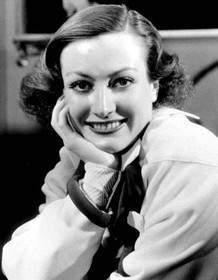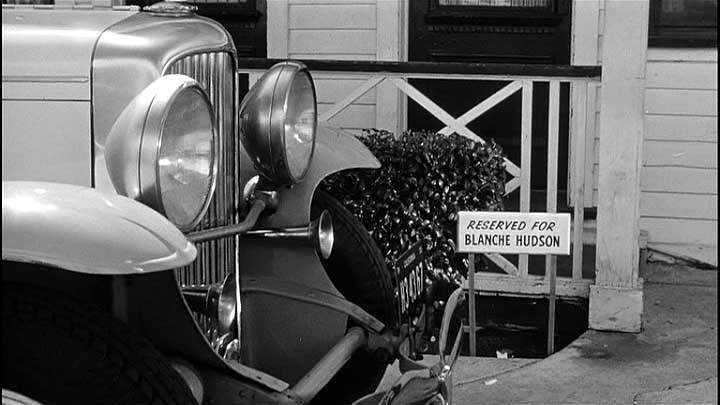What Ever Happened to Baby Jane? 1962

In the fading glamour of Hollywood's past, a dark and disturbing story emerges. Aging actress Jane Hudson, determined to recapture her lost stardom, keeps her sister Blanche, a former child star now paralyzed after a car accident, imprisoned. As Blanche plots her retribution, Jane's increasingly sinister schemes to hide her sister and engineer a comeback lead to a chilling and deadly confrontation.
Does What Ever Happened to Baby Jane? have end credit scenes?
No!
What Ever Happened to Baby Jane? does not have end credit scenes. You can leave when the credits roll.
Meet the Full Cast and Actors of What Ever Happened to Baby Jane?
Explore the complete cast of What Ever Happened to Baby Jane?, including both lead and supporting actors. Learn who plays each character, discover their past roles and achievements, and find out what makes this ensemble cast stand out in the world of film and television.
External Links and Streaming Options
Discover where to watch What Ever Happened to Baby Jane? online, including streaming platforms, rental options, and official sources. Compare reviews, ratings, and in-depth movie information across sites like IMDb, TMDb, Wikipedia or Rotten Tomatoes.
Ratings and Reviews for What Ever Happened to Baby Jane?
See how What Ever Happened to Baby Jane? is rated across major platforms like IMDb, Metacritic, and TMDb. Compare audience scores and critic reviews to understand where What Ever Happened to Baby Jane? stands among top-rated movies in its genre.

75
Metascore
8.3
User Score


%
TOMATOMETER

0%
User Score

8.0 /10
IMDb Rating

79
%
User Score
Take the Ultimate What Ever Happened to Baby Jane? Movie Quiz
Challenge your knowledge of What Ever Happened to Baby Jane? with this fun and interactive movie quiz. Test yourself on key plot points, iconic characters, hidden details, and memorable moments to see how well you really know the film.
What Ever Happened to Baby Jane? Quiz: Test your knowledge on this psychological thriller that explores the dark relationship between two sisters.
What is the name of the child star in the film?
Baby Jane Hudson
Blanche Hudson
Elvira Stitt
Gina Gillespie
Show hint
Awards & Nominations for What Ever Happened to Baby Jane?
Discover all the awards and nominations received by What Ever Happened to Baby Jane?, from Oscars to film festival honors. Learn how What Ever Happened to Baby Jane? and its cast and crew have been recognized by critics and the industry alike.
17th British Academy Film Awards 1964


35th Academy Awards 1963

Cinematography (Black-and-White)
Costume Design (Black-and-White)
Sound
15th Directors Guild of America Awards 1963

20th Golden Globe Awards 1963

Best Supporting Performance in a Motion Picture – Drama, Comedy or Musical (Supporting Actor)
Victor BuonoFull Plot Summary and Ending Explained for What Ever Happened to Baby Jane?
Read the complete plot summary of What Ever Happened to Baby Jane?, including all major events, twists, and the full ending explained in detail. Explore key characters, themes, hidden meanings, and everything you need to understand the story from beginning to end.
In 1917, we are introduced to Baby Jane Hudson, played by Julie Allred, a prodigious vaudevillian child star captivating audiences and leading to the creation of a lavish Baby Jane doll. However, while surrounded by admirers, Jane becomes an utterly spoiled individual, indulged by her father, Ray Hudson (Dave Willock), while her disapproving mother and her 11-year-old sister, Blanche Hudson (Gina Gillespie), watch enviously from the periphery.
Fast forward to 1935, the dynamic within the Hudson household has dramatically shifted. Now both sisters are established movie stars, but it is Blanche who has become the celebrated, glamorous figure, while Jane finds herself battling obscurity as her films flop miserably. Desperately attempting to reclaim her past glory, Jane succumbs to alcohol, struggling to cope with her fading dreams. In a pivotal moment after returning home from a party, the sisters’ car careens into the mansion’s gate, foreshadowing the tumultuous relationship that will follow.
By 1962, the once-dynamic duo now exists in a dilapidated mansion in Los Angeles. Blanche, confined to a wheelchair and portrayed by Joan Crawford, spends her days reliving her cinematic past while Jane, masterfully portrayed by Bette Davis, has grown into a bitter, aging woman whose incessant drinking and gaudy makeup efforts aim to mask her true age. Constantly at odds, Jane’s abusive demeanor suffocates Blanche, who remains largely dependent on her sister, save for her bond with Elvira Stitt, their compassionate cleaning lady (played by Maidie Norman). Elvira harbors deep concerns about Jane’s erratic behavior, especially given her worrying habit of sifting through Blanche’s mail and discarding it.
Deep in her delusions, Jane grapples with the memories of her once-starlit childhood. One day, as she fixes her hair and makeup to venture out and seek a pianist for a comeback, Blanche desperately tries to reach out for help from the outside world. However, Jane intercepts her plea—a response that only escalates their volatile relationship. A grim discovery awaits Blanche as she finds her beloved parakeet cruelly placed under her lunch tray, an act of Jane’s malice.
Amidst the sisterly chaos, newly introduced character Edwin Flagg (played by Victor Buono), a struggling yet earnest young man, responds to Jane’s call for a piano player. His arrival at the Hudson mansion intensifies the strained atmosphere. Jane nostalgically performs her childhood hit, “I’ve Written a Letter to Daddy,” while Edwin fights to conceal his discomfort. As tensions rise, Jane violently confronts Blanche several times, leading to a shocking climax as she forbids her sister from reaching out for any kind of help.
Further tragedy unfolds when Jane, consumed by paranoia, goes to extreme lengths to silence those who threaten her twisted sanctuary. The drama escalates with Elvira’s untimely demise at the hands of Jane, plunging her deeper into a psychological abyss defined by isolation, obscurity, and resentment.
A week passes; rumors of their disappearance begin to circulate when police investigation reveals Elvira’s fate. As Jane’s mental state spirals out of control, her desperate attempts to escape the consequences of her actions lead to a guilt-ridden confrontation with her sister.
Their final moments on a deserted beach expose the deep-seated truths of their tumultuous lives. In a poignant confession, Blanche reveals the tragic accident that left her incapacitated, forcing Jane to grapple with the reality that her self-inflicted anguish may have clouded her perception of their shared history.
With the police closing in, Jane’s fleeting moments of joy disintegrate into madness as she performs for a crowd, blissfully unaware of the heart-wrenching tragedy that surrounds her. The film concludes on a haunting note as Jane dances, lost in her delusions while Blanche lies motionless in the sand, the brutal toll of their intertwined fates finally revealed. THE END
Uncover the Details: Timeline, Characters, Themes, and Beyond!

Coming soon on iOS and Android
The Plot Explained Mobile App
From blockbusters to hidden gems — dive into movie stories anytime, anywhere. Save your favorites, discover plots faster, and never miss a twist again.
Sign up to be the first to know when we launch. Your email stays private — always.
Watch Trailers, Clips & Behind-the-Scenes for What Ever Happened to Baby Jane?
Watch official trailers, exclusive clips, cast interviews, and behind-the-scenes footage from What Ever Happened to Baby Jane?. Dive deeper into the making of the film, its standout moments, and key production insights.
Cars Featured in What Ever Happened to Baby Jane?
Explore all cars featured in What Ever Happened to Baby Jane?, including their makes, models, scenes they appear in, and their significance to the plot. A must-read for car enthusiasts and movie buffs alike.
What Ever Happened to Baby Jane? Themes and Keywords
Discover the central themes, ideas, and keywords that define the movie’s story, tone, and message. Analyze the film’s deeper meanings, genre influences, and recurring concepts.
What Ever Happened to Baby Jane? Other Names and Titles
Explore the various alternative titles, translations, and other names used for What Ever Happened to Baby Jane? across different regions and languages. Understand how the film is marketed and recognized worldwide.
Similar Movies To What Ever Happened to Baby Jane? You Should Know About
Browse a curated list of movies similar in genre, tone, characters, or story structure. Discover new titles like the one you're watching, perfect for fans of related plots, vibes, or cinematic styles.
Quick Links: Summary, Cast, Ratings, More

What's After the Movie?
Not sure whether to stay after the credits? Find out!
Explore Our Movie Platform
New Movie Releases (2026)
Famous Movie Actors
Top Film Production Studios
Movie Plot Summaries & Endings
Major Movie Awards & Winners
Best Concert Films & Music Documentaries
Movie Collections and Curated Lists
© 2026 What's After the Movie. All rights reserved.












































